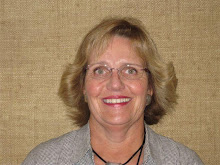Digital Photographer Boot Camp – October 24, 2009
This was one of the IL2009 Pre-conference workshops. Since I have little skill in this area it seemed like a prerequisite for my blog since I want to share photos as well. It promised to sharpen skills of the novice to the experience photographer. At the end of part 2 of my post you can be the judge. The presenters were Amanda Hollister, Web Services Librarian, State University of New York; Michael Porter, Communications manager, WebJunction; and Michael Sauers, Technology Innovation Librarian, Nebraska Library Commission. Be sure to check out SPL’s “
American Museum of Photography” under Research Guides on our website.
Many of the presenter’s photos are on
Flickr a photo sharing website. In their introduction they said photos can present powerful stories, they can be emotional, and we should use photos to market our library’s events. One of the basic points they stressed was to resave the original photo and do your editing in a copy. The reasoning behind that is that
PNG and
TIFF formats are “
loseless compression files” but
GIFs and
JPEGs are not. What this means it that it is better to edit PNGs and TIFFs because when you do - it reduces file size without losing image data.
Michael Porter suggested using the 7 Basic Principles of Design when taking photos. I found and added links in case you wanted to view a little more about the terms.
Balance,
Rhythm,
Emphasis,
Contrast,
Unity,
Proportion,
ScaleHe also uses the 7 Elements of Design in Art for his photos.
Line, Shape, Form, Light, Texture, Space and ColorMichael recommended using the “
Rule of Thirds” to get the best focal point for the image. This works both vertically and horizontally. It is also called golden mean, divine proportion and golden proportion.
I found a good link on “Composition & the Element of Visual Design” by Robert Berdan to help explain the above terms. It is both informative and has nice pictures giving you a visual of the elements they are describing.
http://photoinf.com/General/Robert_Berdan/Composition_and_the_Elements_of_Visual_Design.htmStay tuned for Part 2.
